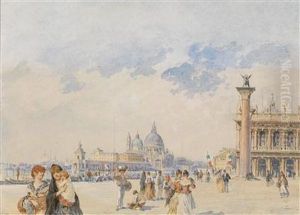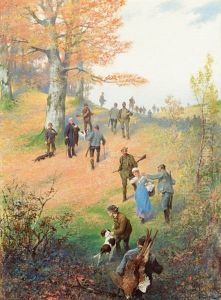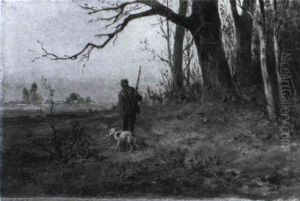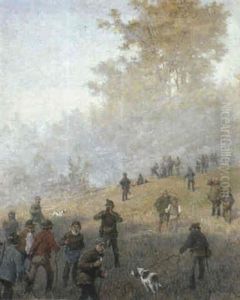Hermann Giesel Paintings
Hermann Giesel, born in 1834, was a notable figure in the realm of art, though not primarily recognized as a mainstream artist in the conventional sense. His contributions lie more obscurely within the intersections of art, technology, and photography, a field that was burgeoning during his lifetime. Giesel's work and experiments are reflective of the broader 19th-century fascination with capturing and manipulating light, an endeavor that laid the groundwork for future artistic and photographic techniques.
Giesel's career did not follow a traditional trajectory towards fame in the art world. Instead, his interests and talents led him down a path where science meets art. Living through a period marked by rapid technological advancements, he was part of a generation that witnessed the birth and evolution of photography. Giesel was intrigued by the scientific aspects of art, focusing on the chemistry of photography and the physics of light, which were critical to the development of photographic processes. His work, therefore, sits at a critical juncture of historical developments in photographic technology.
While detailed accounts of Giesel's life and specific contributions to art and technology are not extensively documented in mainstream art history narratives, he is representative of the many individuals whose work behind the scenes has significantly influenced the capabilities and understanding of visual representation. Giesel's experiments and findings, like those of his contemporaries, would have contributed to the evolving art of photography, influencing both the technical and aesthetic dimensions of the medium.
Hermann Giesel passed away in 1904, leaving behind a legacy intertwined with the foundational stages of photographic art and science. His life and work underscore the importance of interdisciplinary approaches to art, highlighting how technological innovation can expand the boundaries of artistic expression. Giesel's contributions, though perhaps not widely recognized, exemplify the critical role of experimentation and scientific inquiry in the evolution of visual arts.




